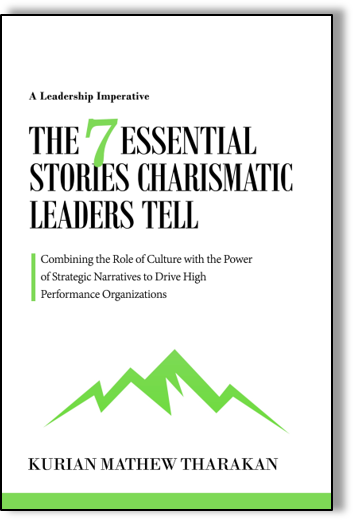The Ultimate Guide to Writing an Unforgettable Elevator Speech
Author’s Note: I am astounded that this page receives thousands of readers each month. That number tells me that there are a lot of people looking for solid advice on how to craft a simple, compelling, and persuasive pitch. Most of the pitches I have seen have not been very good. It wasn’t because the product or the team were poor, but rather the pitch structure and story weren’t well thought out. But with just a little planning and strategy, this can be corrected. If you are looking for the best ways to structure, present, and amplify your elevator speech, this article is for you. I wrote this based on my experiences in coaching hundreds of companies to present, with the highlight being to prep five companies to star in a Dragon’s Den pitch (the American equivalent is Shark Tank).
![]() Want to download a pdf of this article? Click here: The Best Elevator Pitch Examples, Templates, and Tactics PDF.
Want to download a pdf of this article? Click here: The Best Elevator Pitch Examples, Templates, and Tactics PDF.
The first thing, the absolute first thing, that anyone “buys” from you is your big idea embedded in story form. If people don’t “buy” into the big idea and story, they won’t buy anything else. [Read that again.]
Do you believe my statement above? If so, great! Even an article like the one you are about to read on elevator pitches needs an elevator pitch!! Your big idea and story are the beginning of your elevator pitch.
By definition, an elevator pitch is a quick persuasive speech that is used to create interest in a project, a concept, or people. It distills your ideas into the simplest, clearest points of value, what makes you different, and instills enough curiosity to make the prospect want to hear more. Theoretically, it should be no longer than the time it takes to ride an elevator to the top floor in a building. (e.g. between 30 seconds to 2 minutes.)
… luck happens when opportunity meets with preparedness …
As is often the case, most opportunities to meet with influential people happen spontaneously and unpredictably: the rising screenwriter who collides with a Hollywood producer while waiting in line for a taxi, or the hopeful new employee who finds himself in the elevator with the company CEO. The adage luck happens when opportunity meets with preparedness is very true.
There are many different types of pitches, which serve different purposes. While elevator pitches are meant to instill enough intrigue to get the prospect to ask you to tell them more, they do not have the persuasive horsepower of a full-fledged sales or investor pitch. Because these purposes are different, they require different lengths of time and stages of delivery.
Pitching is a skill, and just like all skills, there are ways to perfect it. Once you understand the principles of a pitch structure, your elevator pitch, sales pitch, boardroom presentation, or investor pitch will improve dramatically.
I recently partnered with the NABI business accelerator’s Managing Director, Dar Schwanbeck, to run one of their clients through a crash course for a pitch on the nationally televised show Dragon’s Den (the American equivalent is Shark Tank.) In fact, this was the 4th client that I have worked with to make an investment pitch in the den, and I have compiled the following takeaways on the structure and psychology of enticing the Dragons to invest. (Not pitching an investor anytime soon? Not to worry! These techniques will also help you get what you want from bosses, spouses, customers, and small children.)
Start Creating Your Laser-Sharp Pitch (career or business)
Elevator Pitch Basics
Let’s start with two elevator speech templates, an all-purpose generic template, and a sales pitch template. For these examples, we will use the fictional company Hydrolyzier, a manufacturer of commercial-grade water purification systems.
Generic Elevator Pitch Example
The following is a standard pitch format that can be applied to almost any situation.
My name is <<NAME>>, the CEO of <<COMPANY>>. Our company manufactures <<PRODUCT>> for <<TARGET CUSTOMER>> that allows them to <<YOUR VALUE PROPOSITION>>.
Unlike <<OUR COMPETITION>>, we <<PRIMARY COMPETITIVE POINTS OF DIFFERENCE>>.
<<CALL to ACTION>>
Using this format, here is a Hydrolyzier elevator pitch example:
Hi, my name is Bob Smith, and I am the CEO of Hydrolyzier Water Company. We manufacture the Hydrolyzier MaxLite, a commercial-grade water purification system that uses a tri-plane osmotic process that dramatically reduces the content of impurities in drinking water. Unlike competing systems, our patented osmotic process uses one-third of the power of a traditional water purifier while reducing the installation space to half. Our modular construction takes less than 36 hours to install, and best of all its price is less than 60% of similar systems. If you go to our YouTube channel, you can watch a video showing the Hydrolyzier in operation in a remote village in Ghana, West Africa
A Sales Pitch Example
If you are pitching in a sales situation, here is a format you could use:
Have you ever <<THE SITUATION THAT THE PROSPECT FACES>>?
<<COMPANY NAME>> manufactures <<PRODUCT LINE>> for <<TARGET MARKET>> so that you can <<PRIMARY VALUE PROPOSITION / BENEFIT>>.
Unlike <<TRADITIONAL ALTERNATIVES/COMPETITIVE OFFERINGS>>, <<OUR PRODUCT>> is <<COMPETITIVE POINT OF DIFFERENCE>>.
<<CALL TO ACTION>>.
Using this format, here is Hydrolyzier’s elevator pitch:
Have you ever had a situation that required a low power, small footprint, water purification system for a remote settlement? Hydrolyzier Water Company manufactures the Hydrolyzier MaxLite, a commercial-grade water purification system that uses a tri-plane osmotic process that dramatically reduces the content of impurities in drinking water. Unlike competing systems, our patented osmotic process uses one-third of the power of a traditional water purifier while reducing the installation space to half. Our modular construction takes less than 36 hours to install, and best of all its price is less than 60% of similar systems. We have successfully installed the system in many remote communities. They have found it to be easy to install, reliable, and inexpensive to operate. Our most recent installation is in a remote village in Ghana, West Africa which we have documented in a 5 minute YouTube video. May I send you the link?
Six More Elevator Pitch Types
Beyond these standard elevator pitches, Daniel Pink, in his book To Sell is Human: The Surprising Truth About Moving Others gives us six other types of pitches.
The One-Word Pitch
Can you distill your entire presentation into a single word?
- For Google, it might be “search.”
- For an Alfred Hitchcock horror movie, it might be “scream.”
- The word “inbound” belongs to Hubspot.
- While “invent” is closely associated with Thomas Edison.
For Hydrolyzier it is “purified water.”
Okay, you caught me. That’s two words, … but that’s okay.
(… continued below)
 Our new book is out! Once you nail your elevator pitch, you will need to expand it into The 7 Essential Stories Charismatic Leaders Tell. Click here to get your copy.
Our new book is out! Once you nail your elevator pitch, you will need to expand it into The 7 Essential Stories Charismatic Leaders Tell. Click here to get your copy.
Here’s a portion from the book’s intro: Charismatic leaders seem to possess an effortless ability to influence, captivate, charm, and inspire people to action. Whether it is through grace, passion, or unshakable confidence, charismatic people can rouse the sentiments and energies of the people they touch. While not everyone can master charisma, there is one charismatic tool that any leader can learn — the power of storytelling; specifically, how to communicate a strategic narrative. A strategic narrative is a compelling story that weaves together existential concepts like who you are, your origin, your big idea, what you fight for and why, and offers a bold vision of a future that your people can rally behind. When charismatic leaders wield captivating strategic narratives, their power is unstoppable.
Your elevator pitch is just the beginning. To really put your big idea into play, you must master strategic narratives. This book will show you how. Click here to get your copy.
The Question Pitch
Ask yourself, ‘Are you better off now than you were four years ago?
If your presentation’s central idea is already understood by your audience, a question pitch may be ideal. In the 1980 US presidential election campaign between Ronald Reagan and Jimmy Carter, Reagan asked a simple question, “Ask yourself, ‘Are you better off now than you were four years ago?’” Most people immediately understood the question and its context. Reagan became the 40th President of the United States.
For Hydrolyzier it might be, “How can you supply a rural village in Ghana, West Africa with clean drinking water in under 36 hours, and at less than 60% of the cost of other water purification systems?”
The Rhyming Pitch
It takes a licking and keeps on ticking.
Rhymes are easy to mentally process and remember. Also, some scientific studies have found that rhymes are perceived to be more accurate and believable than non-rhymes when pitching the same concept.
- Teeth whitening toothpaste Pepsodent used the following rhyme in its 1960’s and 70’s commercials, “You’ll wonder where the yellow went when you brush your teeth with Pepsodent!”
- To emphasize its timepieces’ durability, watch manufacturer Timex said, “It takes a licking and keeps on ticking.”
For Hydrolyzier it might be,
- “Get wet.” or
- A Pure, Clean, Water Stream
(This was hard. How did I do?)
The Subject Line Pitch
Every email subject line that you write is a pitch inviting the recipient to open it. Daniel Pink advises that your subject line pitch should offer utility value, curiosity, and specificity. However, he cautions that while specificity should be in all subject lines, you should choose to use either utility value or curiosity for any single subject line
Here are some examples:
- Drugstore: “Your prescription is expiring.”
- Mortgage Broker: “How Much House Can You Afford?”
- Credit Card Company: “You’re missing out on reward points.”
For Hydrolyzier it might be, “How Remote Communities Can Install On-Site Purified Drinking Water Systems in Under 36 hours.”
The Twitter Pitch
Can you get your pitch down to 140 characters? Or less? Here are a couple of funny ones for Twitter itself:
- “Twitter. The only place you get excited when a stranger follows you.” or
- “Twitter. Get the news before it happens.”
For Hydrolyzier it might be, “Clean Drinking Water for 300 African Villagers in Under 36 hours.”
The Pixar Pitch
Animation studio Pixar has produced a string of hits, including Wal-E, Finding Nemo, Toy Story, Incredibles, and many, many others. The standard plot structure for each of these stories fall into the following format:
Once upon a time <<INTRODUCE CHARACTER AND CONTEXT>>
Every day, <<ESTABLISH THE WAY THINGS WERE>>.
One day <<INTRODUCE PROBLEM/INCITING INCIDENT>>.
Because of that <<CHALLENGE>>.
Because of that <<SEARCH FOR SOLUTION>>
Until finally <<FINDS SOLUTION>>
Now, <<ESTABLISH THE WAY THINGS ARE BETTER NOW>>
For Hydrolyzier it might be:
In Africa, village water wells are vital to the sustainability of the rural population. In one community, we counted over 300 people who relied on a single well as their only source of daily drinking water, often walking from miles around to obtain it. Last year, the well was found to be contaminated by waterborne parasites. Hydrolyzier was one of three companies contacted by the regional government to remedy the situation. We were selected to install our new water purification system, the Hydrolyzier MaxLite, primarily due to the speed which we could deploy it (in less than 36 hours), and its cost (less than 60% of its competitors). Today, the people of this village can safely drink from their well again.
Amplifiers for Your Pitch
If you are in a full-fledged pitch like those on Dragon’s Den or Shark Tank, these pitch amplifiers will come in very handy. Beyond profiling a great product or service, your pitch should also contain the following:
Shock, Fascination, or Intrigue – The Dragons’ minds are wandering during your entrance. Their brains are actively searching for WHY they should care. Give them a simple statement that startles them into rapt attention. Here’s an example if you are pitching a water purifying device. In the introduction, you can either say:
- “Our device is called the Hydrolyzier, and it uses a tri-plane osmotic process that dramatically reduces the content of impurities in drinking water.”
– or –
- “Water is life, yet 768 million people do not have access to safe, clean drinking water, and 2.5 billion people live without proper sanitation. When water is unsafe and sanitation non-existent, water can kill.” (Unicef Clean Water Campaign)
The 2nd statement allows a fluid transition into a description of your product WITH the Dragons’ full attention.
… a “space western”.
Metaphor – Because people absorb new information by relating it to an existing reference point they understand, you should create a metaphor that allows them to associate, compare, and draw relations easily. When Gene Roddenberry was pitching the original Star Trek series to NBC in 1964, the concept of a racially mixed crew with women and aliens on the bridge travelling to distant planets was so foreign that it was initially dismissed because NBC brass didn’t think anyone would watch. To sell the idea, Roddenberry used the metaphor of a “space western.” Because western movies and TV shows were something everyone was familiar with, this bought him the time and funding to develop not just one, but two pilots for the popular series.
Hydrolyzier’s primary differentiating value propositions are its low cost, small size, and rapid deployment capability. We could use the following metaphor to convey these central ideas:
“Hydrolyzier: We are the IKEA of Commercial Water Plants.”
Clarity – As a minimum, the elevator pitch has to have clarity on the attributes of:
- The primary problem the product solves
- The way it solves it
- Alternatives to the product, but emphasizing how you are better
- How big the market is
- The cost of the solution
- The price you can charge
- How much investment capital you need and for what purpose
- What the Dragons will receive for their money
Emotional Appeal – To get people moving fast and with purpose, you must infuse your pitch with emotion. Confidence, fear, anger, amazement, joy, indignation, love, disgust, envy, or dozens of other emotions can energize your pitch. Choose the ones most relevant to the story you are telling.
Tangible Demonstration – Nothing shows people what your product can do better than a physical demonstration. Imagination and understanding are stoked further when something is taken in hand. Get the audience involved in a demo.
Risk Reduction – Every new investment involves risk. Show the Dragons you understand what the risks are, and how you will quell them. By the way, nothing makes investment risk in a startup go away faster than showing you have sales. Show the Dragons your sales pipeline to get a deal done fast.
Authority – Authority commands attention, respect, and intrigue. Show the Dragons you are an authority on the market, its pain, your solution, and the competitive alternatives. Authority can come in many forms but always includes the primary elements of knowledge, experience, credentials, and public recognition. Demonstrate all four in the pitch.
Scarcity – If it’s valuable, it’s probably scarce. Show the Dragons that the opportunity to invest is (truthfully) fleeting. Some common reasons why include:
- Sales are coming in so fast you will soon be able to self-fund out of cash-flow
- Because sales are increasing, the valuation they can invest at will continue to rise the longer they wait
- You have another strategic partner that has indicated they want to invest in you
Repetition – Repetition drives the message deeper. What is the central unifying message of your elevator speech? Repeat it three times in the presentation. For the UNICEF Clean Water Campaign, it might be “Water is life.”
Contrast – Something is “hot” only in relation to something that is “cold.” The Dragons’ brains are actively looking for a contrast to help them analyze and categorize the data for a decision. In the Hydrolyzier example, the easiest way to employ contrast is to show a before and after comparison of the water. Dirty, polluted water before filtration, clean, clear water after.
Story – Now, wrap it all up in a story. Humans have been gathering in groups to tell stories for millennia. Stories have the ability to draw and keep attention, fascinate, intrigue, and engage all our mental and emotional energies. Great brands are about great stories. Create a powerful narrative to tell.
Time – Finally, keep the pitch short, just long enough to get all of the above out, but no longer.
By using these structures, and embedding these psychological persuasion tactics in your pitch, you will have a dramatically improved chance of making a memorable impact!
Start Creating Your Laser-Sharp Pitch (career or business)
![]()
 by
by 